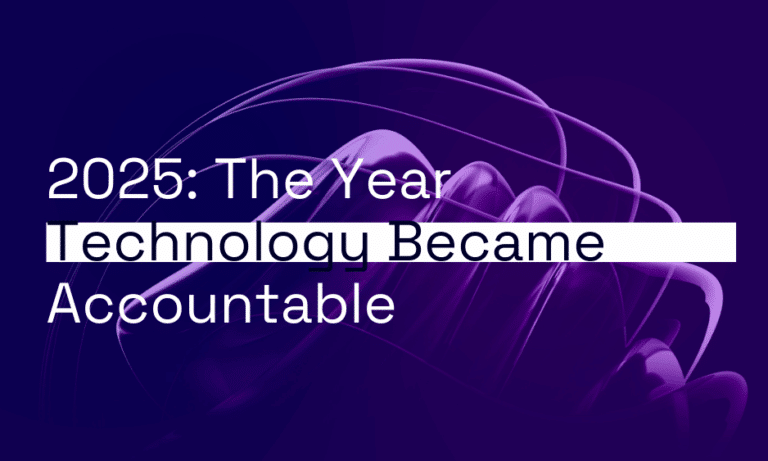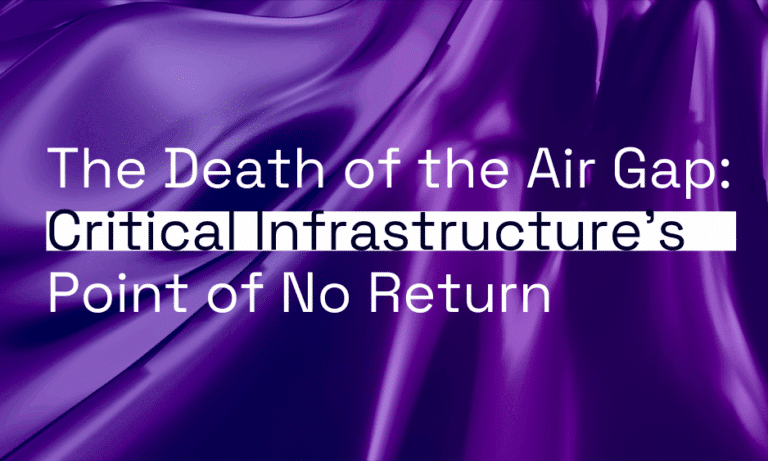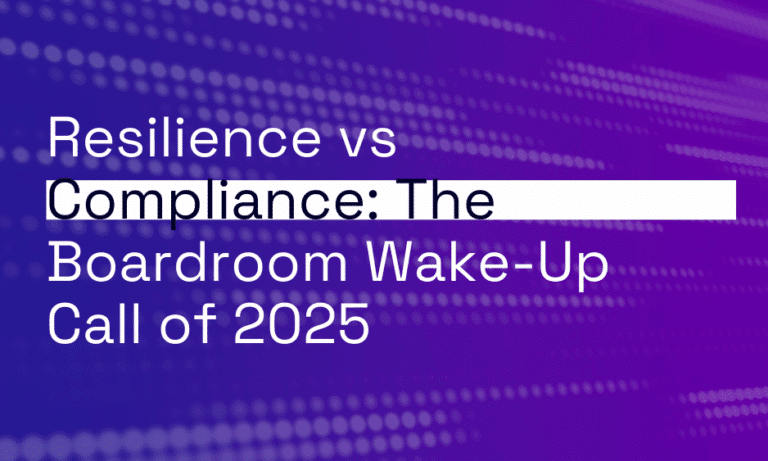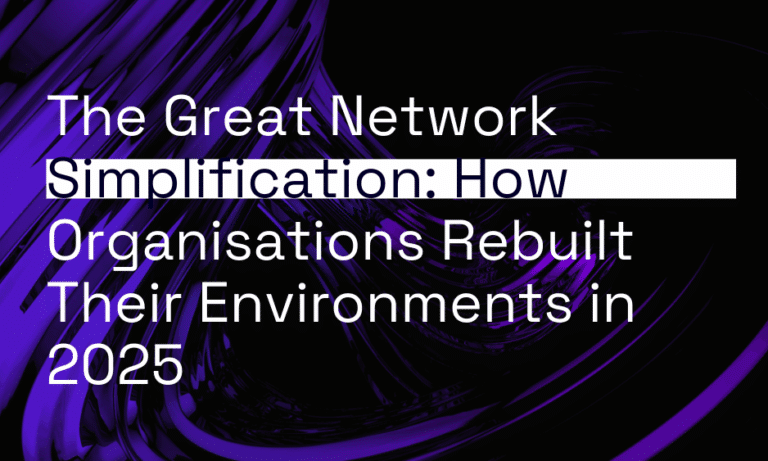Network demands have never been higher, with more users, devices, and bandwidth-heavy applications than ever before. The exciting news is we’re at the cusp of a connectivity revolution, driven by groundbreaking advancements in fibre optics and growing investments from governments.
Full fibre broadband, also known as Fibre to the Premises (FTTP), is becoming the gold standard of internet connectivity worldwide. Unlike traditional broadband connections that relied on sluggish copper wires for the final leg of the connection, fibre optic cables run directly to business premises, transmitting data as light signals. The result is significantly faster and more reliable internet connections.
Currently, businesses with full fibre enjoy gigabit upload and download speeds (nearly 10 gigabits per second), far surpassing older broadband options. The upgrade to full fibre broadband — available for free across most of Australia and expected to be accessible everywhere at no cost — has already been transformative for organisations seeking to boost productivity, efficiency, agility, resilience, and innovation. The transition to full fibre is set to gain even more momentum as more businesses notice the impact it’s having on their industry peers and competitors.
The transition to full-fibre networks is also being championed by governments worldwide that recognise the economic and social benefits they bring. For example, regions with advanced network infrastructure can attract investments from businesses that need dependable high-speed internet. These areas can then become bustling tech hubs, creating jobs, sparking innovation, bridging the digital divide, and driving inclusive economic development.
Breakthroughs in fibre optics
Recent breakthroughs in fibre optics are now setting the stage for truly mind-blowing internet speeds and capabilities.
From gigabit to petabit
In late 2023, international researchers set a record-breaking data rate of 22.9 petabits (22.9 million gigabits) per second using a single optical fibre.
Not long before this, a collaborative effort from Australian, Japanese, Dutch, and Italian scientists resulted in a data transmission speed of 1.7 petabits per second — the equivalent to the combined speed of 17 million home broadband internet connections — over a 67 km length of fibre. This was enabled by a groundbreaking glass chip developed at Macquarie University.
AI-native 6G networks
Fibre optics are also set to be the crucial backbone for both 5G and the highly anticipated 6G networks. With 6G expected to offer data transfer rates up to 100 times faster than 5G and ultra-low latencies of less than 1 millisecond, compared to the 30-60 milliseconds latency of traditional broadband, fibre optics will be vital for delivering on these promises.
6G is also expected to be entirely AI-native, meaning AI will be embedded directly into networking equipment, paving the way for autonomous networks that learn, organise, and operate by themselves. Fibre optic cables’ ability to handle massive amounts of data — generated from an extensive range of sources, such as sensors and IoT devices — will be crucial for AI to make real-time decisions.
A quantum leap towards quantum networks
In another exciting breakthrough, quantum data — information that is stored and processed using the principles of quantum mechanics — has successfully been transmitted through standard fibre optic cables for the first time. This milestone is crucial for the development of quantum networks, demonstrating that quantum devices can interface on the same wavelength.
Quantum networks have immense potential across various sectors. They can significantly enhance security by detecting any eavesdropping attempts, making them particularly valuable for governments and financial institutions.
Additionally, connecting quantum computers through these networks will supercharge computing power, allowing industries like pharmaceuticals to solve complex problems that are currently out of reach.
These networks also promise ultra-precise sensing and measurement, detecting tiny changes in our environment with remarkable accuracy, which could transform fields like logistics and medical diagnostics.
From misconceptions to realities: Why forward-thinking businesses are switching to full fibre
Advancements in fibre optics are accelerating rapidly, yet many businesses still depend on outdated ADSL or partial fibre broadband solutions (i.e. Fibre-to-the-Curb and Fibre-to-the-Node). Often, this is due to misconceptions about costs, complexity, and necessity, along with a general fear of change.
In Australia, full-fibre broadband plans are competitively priced, and upgrading from copper to full fibre is free, thanks to the government’s commitment to fibre-fuelled digital infrastructure. Most metro and regional areas already have access to full fibre, making installations straightforward. Streamlined processes ensure that teams can continue their work while experts, like those at Orro, handle the rest of the transition.
While high-speed internet may seem unnecessary to some, businesses of all sizes and industries stand to benefit greatly from all the capabilities of full-fibre broadband. <link to landing page>
For example, full fibre’s symmetric upload and download speeds of up to 10 Gbps, even during peak periods, ensures seamless videoconferencing, file sharing, and real-time collaboration. Its low latency, reduced from 30-60 ms to 5-12 ms, also ensures smooth, real-time data processing. Meanwhile, fibre optics cables are resistant to electrical interference, as well as more secure than copper cables, making full fibre indispensable for businesses.
It’s not just about alleviating day-to-day frustrations; it’s also about future-readiness. It’s unfeasible to adopt technologies, like AI-powered applications, with traditional broadband options.
Real-world applications: Industries feeling the full impact of fibre
Retail
Full fibre can pave the way for transformative changes in retail. With full fibre broadband as the backbone, retailers can harness real-time inventory management systems to optimise their supply chain operations. For example, smart shelves can continuously monitor inventory levels and send instant restocking alerts, ensuring popular items are always available.
But it’s not just behind the scenes where full fibre shines. It can also transform online shopping experiences too. Picture a retailer effortlessly handling massive data sets in real-time, analysing customer behaviour and sales trends to offer personalised experiences. During peak shopping events like Black Friday, the scalability of full fibre broadband becomes crucial, allowing retailers to manage surges in online activity and keep their customers happy.
Meanwhile, in stores, full-fibre broadband can help bring digital and physical shopping together. Interactive digital displays provide detailed product information, reviews, and recommendations. Smart fitting rooms with augmented reality mirrors let customers virtually try on clothes, making shopping more engaging. Even the checkout experience can be better, with cloud-based systems like point-of-sale terminals processing transactions more swiftly.
Healthcare
In healthcare, a significant benefit of full-fibre broadband is the support it can offer for telehealth. With high-speed, low-latency connections, healthcare providers can conduct high-quality video consultations and follow-ups remotely, reaching patients no matter where they are. This is especially valuable for those in rural or underserved areas, ensuring they get timely and effective care.
Full-fibre broadband can also make real-time transmission of health data possible. Wearable devices and sensors can collect vital signs and other health metrics, sending this information instantly to medical professionals. For patients with chronic conditions, remote monitoring can be life-saving, allowing for early detection of potential health issues, leading to timely interventions and better patient outcomes. Patients can also receive personalised care without needing frequent hospital visits, thereby improving their quality of life.
Additionally, the transmission of large medical imaging files such as MRIs and CT scans requires substantial bandwidth. Full fibre can enable these large files to be uploaded and shared quickly and securely among medical professionals, facilitating faster diagnoses and collaborative treatment planning.
Manufacturing
Equipment failures can be both catastrophic and costly. However, with data analytics platforms, underpinned by full-fibre broadband, manufacturers can have the ability to predict equipment malfunctions before they occur. Sensors and IoT devices gather vast amounts of data, which are then analysed using AI-powered platforms to foresee potential issues. This predictive maintenance approach not only minimises downtime but also extends the lifespan of machinery, ultimately saving costs and boosting operational efficiency.
Advanced manufacturing technologies, such as additive manufacturing (3D printing), robotics, and AI, also rely heavily on high-speed broadband to perform optimally. Full fibre can provide the essential bandwidth and low latency required for these technologies. With this robust infrastructure, AI algorithms can analyse large datasets in real-time to optimise production lines, and 3D printers can receive complex design files instantaneously, speeding up both prototyping and production processes.
Another transformative innovation is bandwidth-intensive digital twins. These virtual replicas of manufacturing processes enable real-time adjustments and performance optimisation. Full-fibre networks can enhance the effectiveness of digital twins, providing a clearer path to operational excellence.
Public sector
Intelligent traffic systems and coordinated public transport are vital for reducing congestion and improving urban mobility. Full-fibre broadband can be the backbone of this modernisation, enabling real-time data exchange between traffic lights, sensors, and transport management systems. This connectivity allows for dynamic traffic management, with traffic light sequences adjusting based on current conditions. Full fibre can also support real-time updates on bus and train schedules, ensuring passengers have accurate information to effectively plan their journeys.
Public safety is another top priority for governments. Full-fibre broadband can enhance surveillance systems that depend on high-speed connectivity to transmit live video feeds to control centres, allowing for quicker response times to incidents and better coordination among emergency services. High-speed internet allows for the rapid dissemination of information, such as emergency alerts and weather warnings, to the public.
In addition, full-fibre broadband can allow public sector organisations to deliver services more efficiently and effectively. For example, government agencies can streamline processes such as licensing, permits, and tax submissions through user-friendly online portals, ensuring quicker turnaround times and greater user satisfaction.
Education
Full-fibre broadband can be an essential tool for students to access education from virtually anywhere. The bandwidth provided by full fibre allows students to attend live lectures, complete online assessments, submit assignments, or collaborate on projects seamlessly. This level of accessibility is particularly crucial for those in remote areas or with limited mobility, ensuring that everyone has a fair chance to learn and grow.
Full fibre can also support the development of new, innovative learning methods. Emerging technologies such as virtual reality and augmented reality have opened up a whole new world for students to explore and experiment with, bringing abstract concepts to life. With high-speed internet, students can access VR and AR applications in real-time without experiencing delays or disruptions, enhancing their immersive learning experience.
For universities and research institutions, full-fibre broadband can facilitate high-speed access to research databases, collaborative tools, and cloud-based applications. This accelerates research activities and fosters greater collaboration among scholars and researchers worldwide. Additionally, it can enhance the ability to conduct virtual conferences and real-time data sharing, further enriching the academic environment.
Finance
In financial markets, milliseconds can mean the difference between profit and loss. Full-fibre broadband can provide the speed, reliability, and low latency needed for these transactions. The ability to process large volumes of data instantaneously allows traders to react to market changes in real-time, maximising their returns.
Full-fibre networks can also enable financial institutions to adopt AI to deliver personalised services. For example, robo-advisors, which provide automated financial advice, need real-time data processing capabilities to deliver recommendations that meet individual needs. Financial institutions can harness the full potential of this technology to enhance efficiency and customer satisfaction.
Additionally, blockchain technology and distributed ledger systems rely on robust network infrastructure to enable secure, transparent, and efficient financial transactions. By enabling rapid data transfer, full fibre can support blockchain’s decentralised networks, facilitating real-time verification and reducing latency, which ultimately enhances the overall reliability and performance of these systems.
The future is full fibre
Regardless of what industry you operate in, or how big your business is, full-fibre broadband is set to become the standard fixed access technology for at least the next few decades. For businesses hesitant to get on board, there’s no value in waiting.
At Orro, we understand that transitioning to full-fibre broadband can seem complex. That’s why we offer a seamless and hassle-free transition process tailored to meet your specific needs. Our team of experts will guide you through every step, ensuring minimal disruption to your operations. We provide:
- Personalised consultation: Understanding your business requirements and recommending the best solutions.
- Expert installation: Professional installation services to ensure your new connection is set up correctly.
- Ongoing support: Continuous support and maintenance to keep your network running at peak performance.
- Customised solutions: Tailoring our offerings to match the unique demands of your business.
Discover how we can simplify your transition to full fibre broadband and ensure your business is equipped for the future. Get in touch with us and take the first step towards a faster, more reliable internet connection.









